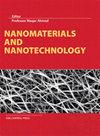Preparation, characterization, and in vitro evaluation of amphiphilic peptide P12 and P12-DOX nanomicelles as antitumor drug carriers
IF 3.3
3区 材料科学
Q2 MATERIALS SCIENCE, MULTIDISCIPLINARY
引用次数: 8
Abstract
Polymerized polypeptide nanomicelles have attracted much attention as novel drug carriers because of their good biocompatibility and degradability. To prepare doxorubicin (DOX)-loaded nanomicelles, an amphiphilic peptide, FFHFFH-KKGRGD (P12), was synthesized by solid-phase synthesis, and the physicochemical and drug-release properties, as well as the cytotoxicity of the nanomicelles, were evaluated in vitro. The P12-DOX polymer micelles were prepared by dialysis. The morphology and particle size were characterized by transmission electron microscopy and dynamic light scattering. The critical micelle concentration (CMC) of the polymer was determined by the probe method, and the drug-release characteristics of the micelles were studied by dynamic dialysis. The cytotoxicity and uptake of the P12-DOX micelles were evaluated against mouse breast cancer cells (4T1) and human umbilical vein endothelial cells. The peptide polymer micelles containing DOX were uniformly sized and had a spherical core–shell structure with an average particle size of 128.6 nm. The CMC of the polymer was low (0.0357 mg/mL). The in vitro release of DOX from the micelles is slow and is consistent with first-order kinetics. The copolymer micelles of the P12 polypeptide and DOX can be used as nanoscale spherical carriers of hydrophobic drugs and have broad applicability.抗肿瘤药物载体两亲肽P12和P12-DOX纳米胶束的制备、表征及体外评价
聚合物多肽纳米胶束由于其良好的生物相容性和可降解性,作为新型药物载体备受关注。为了制备阿霉素(DOX)负载的纳米胶束,采用固相合成法合成了两亲性肽FFHFFH-KKGRGD(P12),并对其理化性质、药物释放特性以及细胞毒性进行了体外评价。通过透析法制备了P12-DOX聚合物胶束。通过透射电子显微镜和动态光散射对其形貌和粒径进行了表征。用探针法测定了聚合物的临界胶束浓度,并用动态透析法研究了胶束的药物释放特性。评估P12-DOX微胶粒对小鼠乳腺癌症细胞(4T1)和人脐静脉内皮细胞的细胞毒性和摄取。含有DOX的肽聚合物胶束大小均匀,具有平均粒径为128.6nm的球形核壳结构。聚合物的CMC较低(0.0357mg/mL)。DOX从胶束中的体外释放是缓慢的,并且与一级动力学一致。P12多肽和DOX的共聚物胶束可作为疏水性药物的纳米级球形载体,具有广泛的适用性。
本文章由计算机程序翻译,如有差异,请以英文原文为准。
求助全文
约1分钟内获得全文
求助全文
来源期刊

Nanomaterials and Nanotechnology
NANOSCIENCE & NANOTECHNOLOGY-MATERIALS SCIENCE, MULTIDISCIPLINARY
CiteScore
7.20
自引率
21.60%
发文量
13
审稿时长
15 weeks
期刊介绍:
Nanomaterials and Nanotechnology is a JCR ranked, peer-reviewed open access journal addressed to a cross-disciplinary readership including scientists, researchers and professionals in both academia and industry with an interest in nanoscience and nanotechnology. The scope comprises (but is not limited to) the fundamental aspects and applications of nanoscience and nanotechnology
 求助内容:
求助内容: 应助结果提醒方式:
应助结果提醒方式:


